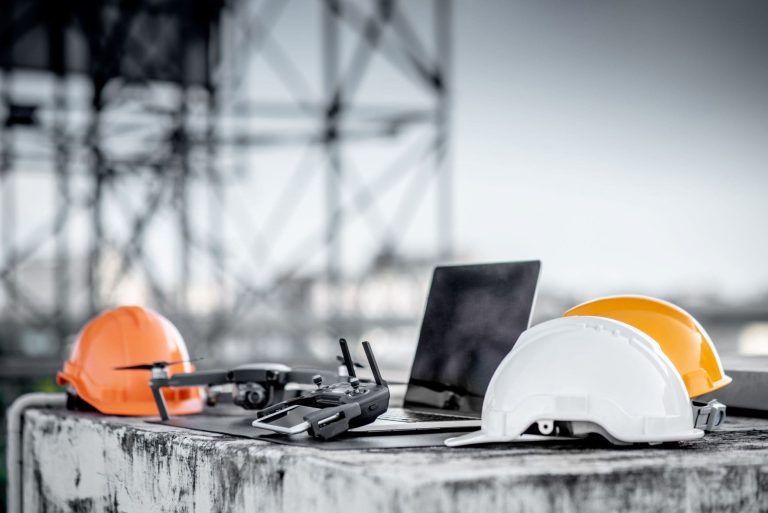Gottlieb Law, PLC provides this article for information purposes only and nothing herein creates an attorney-client relationship. You should not take any actions in reliance on any of the information contained herein without consulting with qualified legal counsel first and reading this article is not a proper substitute for seeking legal advice of your specific situation. Laws change over time and you should seek counsel to discuss any specific legal questions.
The commercial real estate industry has long been associated with traditional, manual processes and procedures. However, in recent years, technology has been rapidly transforming the way that commercial real estate is developed, marketed and managed. From the use of proprietary software to the deployment of robotics, technology is revolutionizing the commercial real estate industry, offering new opportunities for efficiency, sustainability, and profitability.
In this article, we will explore the impact of technology on commercial real estate and look at some of the latest trends and innovations that are driving this transformation.
3D Digital Twins Reduce Costs and Increase Automation
The use of 3D digital twins (immersive, interactive digital version of properties) is becoming more prevalent in the real estate market as they evolve from technical tools to commercial assets. In 2023 and beyond, the industry will witness an increased competitiveness among digital twin providers as they develop and integrate new technologies, like artificial intelligence, virtual reality and augmented reality based features.
The growth of 3D digital twins is expected to reduce costs and increase automation because they offer better graphics and gamification elements than 3D tours and, therefore, cut down the time spent on due diligence and negotiations. Digital twins will also be used as an integrated administrative tool, providing tenants with easy-to-use features such as booking a meeting room (from the digital twin) or joining a virtual office.
Furthermore, digital twins will play a vital role in meeting the new expectations of customers and the future generation of workers, such as providing flexibility and accommodating digital nomad visas. Lastly, digital twins will contribute to Environmental, Social, and Governance (ESG) initiatives by reducing carbon dioxide emissions resulting from travel and printing materials.
Building Information Modelling Software Enables Better Project Management
Building Information Modelling (BIM) software is a powerful tool used by architects, engineers, construction professionals and property developers to create detailed digital models of buildings and infrastructure. BIM software allows these professionals to collaborate more effectively and efficiently, by sharing a single digital model of a building project that can be used by all stakeholders throughout the entire lifecycle of the project.
For starters, BIM software allows users to create detailed 3D models of buildings that can be visualized from all angles. This helps identify design issues and clashes (plus cost estimates) before construction begins, reducing the risk of errors and delays during construction. Multiple users can then work on the models simultaneously, so there is a reduced chance of error and fewer misunderstandings. During development, the software allows users to manage the project’s lifecycle and ensure stakeholders have real-time information.
Finally, BIM software also helps developers create sustainable building designs by allowing users to model the environmental impact of different design choices and optimize building performance for energy efficiency, water conservation and other sustainability metrics.
Drones and Robots Perform Dangerous, Difficult and Time-Consuming Tasks
Drones and robots are playing an increasingly important role in the construction industry, allowing developers, engineers, and contractors to perform tasks more efficiently and safely. Drones are commonly used for site surveys, providing high-resolution aerial images and data that can be used for mapping, measurement, and topographic analysis. This data can be used to create accurate 3D models of the construction site, which can help to optimize the design and planning of the project.
Robots are also being used in construction, particularly in tasks that are dangerous or repetitive. In particular, robots can be used for demolition, excavation, and heavy lifting, reducing the risk of accidents and injury for human workers. Robots are also being used for tasks like bricklaying, concrete pouring, and welding, improving speed and accuracy while reducing labor costs.
Drones and robots in construction enable users to collect and analyze large amounts of data quickly and accurately, which can then be used to optimize construction processes, reduce waste, improve safety, and increase efficiency. For example, by using drones to survey a construction site, contractors can identify potential hazards and optimize the placement of materials and equipment, reducing the risk of accidents and delays. And the cost reduction is undeniable — robots can generally perform tasks more quickly and accurately than human workers, and drones can monitor construction progress, reducing the need for human supervisors and saving time and money.
Technology Simplifies Property Management
There’s a whole host of technology that is transforming the way that commercial properties are managed, making it easier and more efficient to monitor building performance, provide tenant services, and optimize building systems.
Internet of things (IoT) sensors, to name one example, are being used to collect data on everything from energy usage to air quality and occupancy rates. Commercial real estate investors can then use this data to optimize building performance, reducing energy costs and improving tenant comfort and safety. Property owners also use Building Automation Systems (BAS) to control and monitor building systems, such as HVAC, lighting, and security, from a centralized platform — which can also provide guidance on how to enhance the tenant experience.
Another way to leverage technology, predictive maintenance uses data analytics to identify potential maintenance issues before they become major problems. This can reduce repair costs and downtime, while also extending the lifespan of building systems and equipment.
Find an Experienced Commercial Real Estate Attorney
As technology continues to advance, we can expect to see even greater innovations and improvements in the development, marketing and management of commercial real estate properties. Investors should partner with an experienced real estate attorney who is familiar with the latest technology and how it can impact their investments if they are looking for simple ways to improve their commercial real estate business. Gottlieb Law provides industry-leading legal representation for anyone involved in Arizona commercial real estate. Contact our firm today at 602-899-8188 or schedule an initial consultation on our contact us page.
Gottlieb Law, PLC provides this article for information purposes only and nothing herein creates an attorney-client relationship. You should not take any actions in reliance on any of the information contained herein without consulting with qualified legal counsel first and reading this article is not a proper substitute for seeking legal advice of your specific situation. Laws change over time and you should seek counsel to discuss any specific legal questions.


You must belogged in to post a comment.